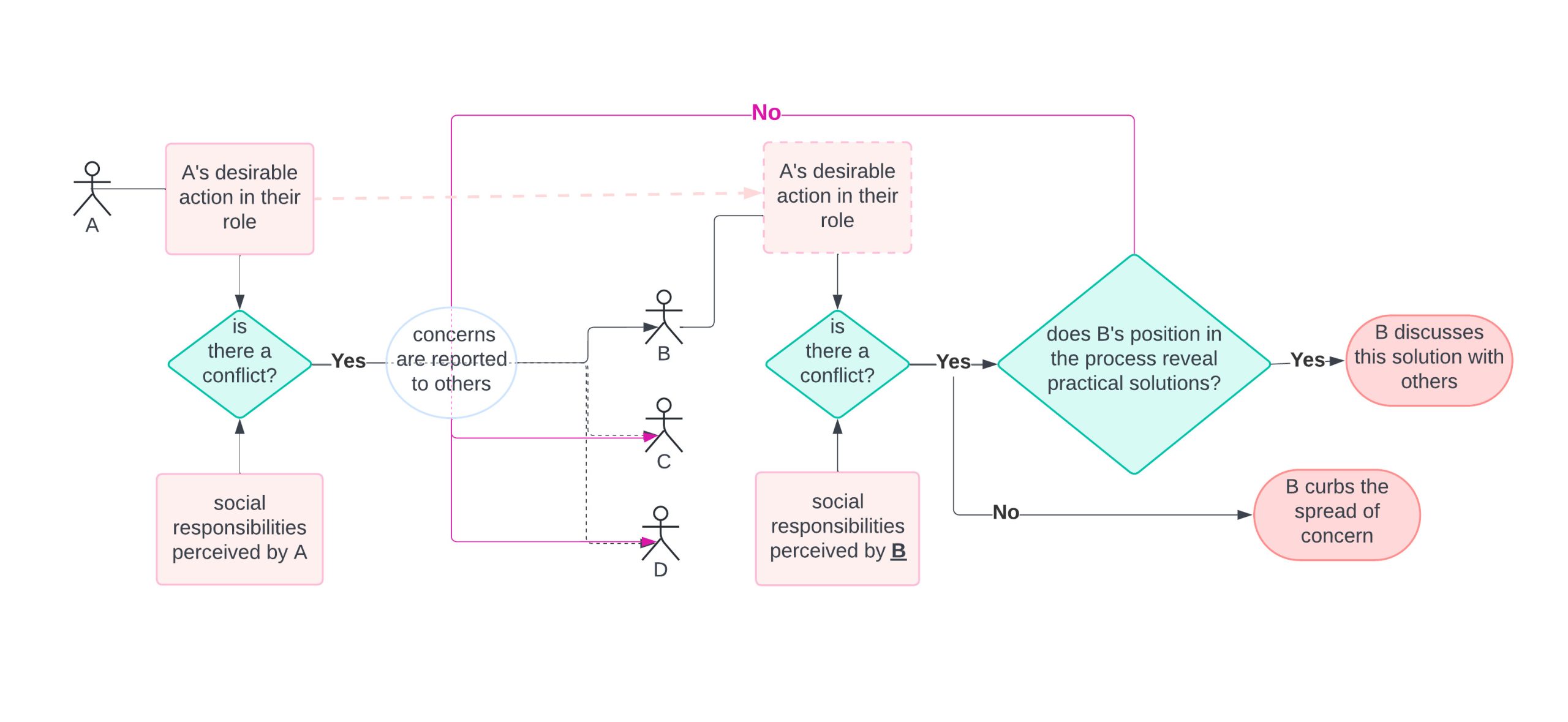Last month, I promised to share more about the framework I introduced during my talk at EurSafe 2024. In that presentation, I laid out a flow diagram for visualizing and fostering ethical deliberation within a startup R&D team. The core challenge I aimed to address was the fast-paced, fluid nature of startup environments, where every team member is deeply involved in the development of a shared technology that’s still under construction. In this setting, individuals—and their personal values—take precedence over rigid roles. Each person brings both technical expertise and personal ethics to the table, interacting with one another as they collaborate on shaping this evolving technology. The model I proposed recognizes these dynamics, emphasizing the importance of these personal interactions and ethical reflections as central to the process of technological innovation.
The result is the diagram you see here, designed to facilitate collective ethical reflection. At the heart of this model is the idea that every team member reports any conflict between their assigned tasks and the values they hold. For instance, a team member might find that an efficient technical solution clashes with their environmental values or social responsibilities. These tensions, which are inevitable in such an environment, can spark meaningful discussions when they are shared. The process begins with one person, let’s call them “A,” raising their concern to others.
What’s vital about this framework is its simplicity—it’s intentionally designed to be straightforward so that it can be applied in the real-world dynamics of a startup team. In fact, one might argue that something similar to this already happens informally in many teams. However, the diagram allows us to distil and focus on the essential elements needed to foster a collective ethical mindset. To make this kind of reflection possible, three key characteristics are required from the team members, drawing on the work of Scottish philosopher Alasdair MacIntyre:
- Critical detachment from their immediate tasks.
- Self-knowledge, or an awareness of the values they stand for.
- Willingness to communicate their ethical dilemmas, acknowledging that these issues are shared, and that solutions might emerge from others’ perspectives.
Beyond these personal attributes in “A”, the success of the process also depends on the openness of others to listen and engage. When “A” voices their concern, for example, “B” must be willing to not only listen but also connect “A”’s tasks with her own responsibilities and values. Finally, this involvement should open up space for creativity—perhaps a solution that was invisible to “A” becomes apparent through the unique expertise or technical knowledge of another team member.
What might initially seem like an irreconcilable conflict between action and ethics could, through this process, reveal a practical solution. In this way, where typically the “ought” follows (and implies) the “could,” here it precedes it, allowing the ethical dilemma to open up new possibilities for the development of the technology. In other words, this kind of ethical deliberation doesn’t just foster individual integrity; it strengthens the collective problem-solving abilities, transforming dilemmas into opportunities for innovation.
About the writer
Marco Innocenti is a researcher at Beefutures and a PhD candidate at the Panthéon-Sorbonne University and at the University of Milan, where he is part of “PhilTech – Research Center for the Philosophy of Technology”. He is a Visiting PhD candidate at the Philosophy Group at Wageningen University and Research (NL), among the world leaders in Agricultural and Environmental Sciences.
In his doctoral thesis in Ethics of Technology, he investigates how the possibilities opened up by AI-driven automation in beekeeping redefine the role and concept of ‘nature’ in Responsible Innovation. This reflection aims to indicate guidelines for ethical innovation in AgriTech R&D labs. In this series of articles, he summarizes his research for the interest of experts and enthusiasts in this field.



